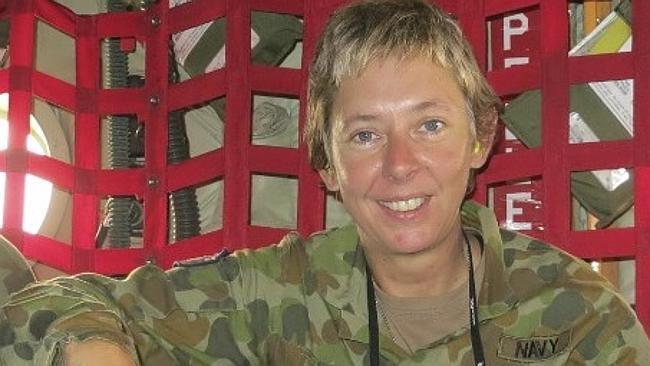Frontline hero: navy reservist heeds call to save lives
By the time she left Afghanistan doctor Janine Gregson had saved more than 50 critically injured people.

When anaesthetist Janine Gregson first set foot inside a trauma hospital in Afghanistan she was struck by the quiet, methodical approach surgical teams took when dealing with a huge influx of patients with horrific injuries.
There was none of the noise and drama that she was used to at home. Even more remarkable was that these teams, which often included recent graduates from US medical schools, were able to produce incredible survival rates for patients who had lost multiple limbs in bomb blasts.
The Royal Australian Navy reservist spent an intense four months working in the Role 3 Multinational Medical Unit at Kandahar airfield in Afghanistan.
Gregson’s posting became so intense, dealing with wave after wave of seriously wounded soldiers and civilians, that across one two-week stretch she had only two nights’ sleep.
“It just went on and on. I don’t know how my body kept going,” she says, adding that a 10-minute burst on an exercise bike would help to fight the overwhelming fatigue.
About half the patients Gregson worked on were coalition soldiers, while the rest were Afghans — about half of them children who deliberately had been targeted by the Taliban. Some of the waves of mass casualties were comprised entirely of children.
Gregson volunteered for the assignment while holidaying in South America. As she was preparing to fly to the Galapagos Islands, the next day an email arrived saying she had been selected for deployment. She did not hesitate to cancel her trip.
Returning to Australia, Gregson has spoken at numerous hospitals and other medical institutions about the teamwork that allows these medicos to excel in the most demanding circumstances.
“The thing I have talked a lot about since I got home is their ability to get outcomes that have never been seen in world history,” she says.
“So they get 97 per cent survival rates for the worst of the worst injuries, and that’s not been done in civilian or military history before.
“Those IEDS (improvised explosive devices) destroy everything. They’re not just a blast, they are a penetrating injury. Trying to get such a multiply-injured person to survive is just staggering.
“The key thing to me about it is enormously successful teamwork.
“It is not just teamwork but well-organised, well-planned teamwork.
“I’ve never seen it in Australia, and I have never seen that level of teamwork and camaraderie in a trauma or emergency setting.”
On arriving at the medical unit the commanding officer set the ground rules for dealing with mass casualties, which were often caused by a bomb blast on a coalition convoy or in a crowded market. The officer explained how they needed to work quietly and that if they needed anything they should communicate with the team leader.
Medics often would be asked to perform tasks that were more limited than their training and experience. At times, Gregson was given the job of just keeping the patient’s air passage open, which was really the work of a technician.
At first she found this “insulting” given her two decades of experience, but she soon became “in awe of the effectiveness and quietness” of the team’s operations.
She also learned that keeping these seriously injured patients alive during surgery involved maintaining a room temperature of about 40C. This hot environment was needed when patients had lost limbs, she says, but it also meant that surgical teams would have to keep themselves hydrated with electrolyte fluid, which they drank from Camelbacks.
At the end of this long deployment, Gregson’s commanding officer wrote a reference that said she had resuscitated more than 50 critically injured patients, many with blast injuries and missing multiple limbs.
Afghanistan was Gregson’s fourth posting as a naval reservist.
Her experiences have made it into the new novel Honour, Duty, Courage, which tells the story of two Australian reservists serving in a hospital in a strife-torn African country. Written by surgeon and author Mohamed Khadra, the book is based on interviews with about 25 medicos who have served in some of the most dangerous places in the world during the past two decades.
Gregson’s first month-long assignments were in Bougainville in the early 2000s following the war between separatists and government forces, and then East Timor. Three years later she landed in Banda Aceh after the 2004 Boxing Day tsunami.
Working amid the mass devastation of Banda Aceh, Australian medical teams were able to find innovative ways of treating the biggest outbreak of tetanus since World War II. As there were not enough ventilators to treat patients, which is the standard practice, Australian medics devised a way to use intravenous infusions to boost the oxygen supply.
“They revolutionised the treatment of tetanus and got survival rates that had never been seen before,” she says.
“They came up with it fairly quickly; we were there within a couple of weeks of it happening.”
The deployment highlighted the inherent risks in these assignments. Gregson ended up in the intensive care unit of HMAS Kanimbla and had to be medically evacuated. “I felt bad I was leaving the team,” she says.
A few months later, a navy Sea King helicopter deployed on the reconstruction effort suffered a mechanical failure and crashed on the island of Nias, killing nine people on board.
Gregson previously had worked with the captain of the aircraft, Paul Kimlin.


